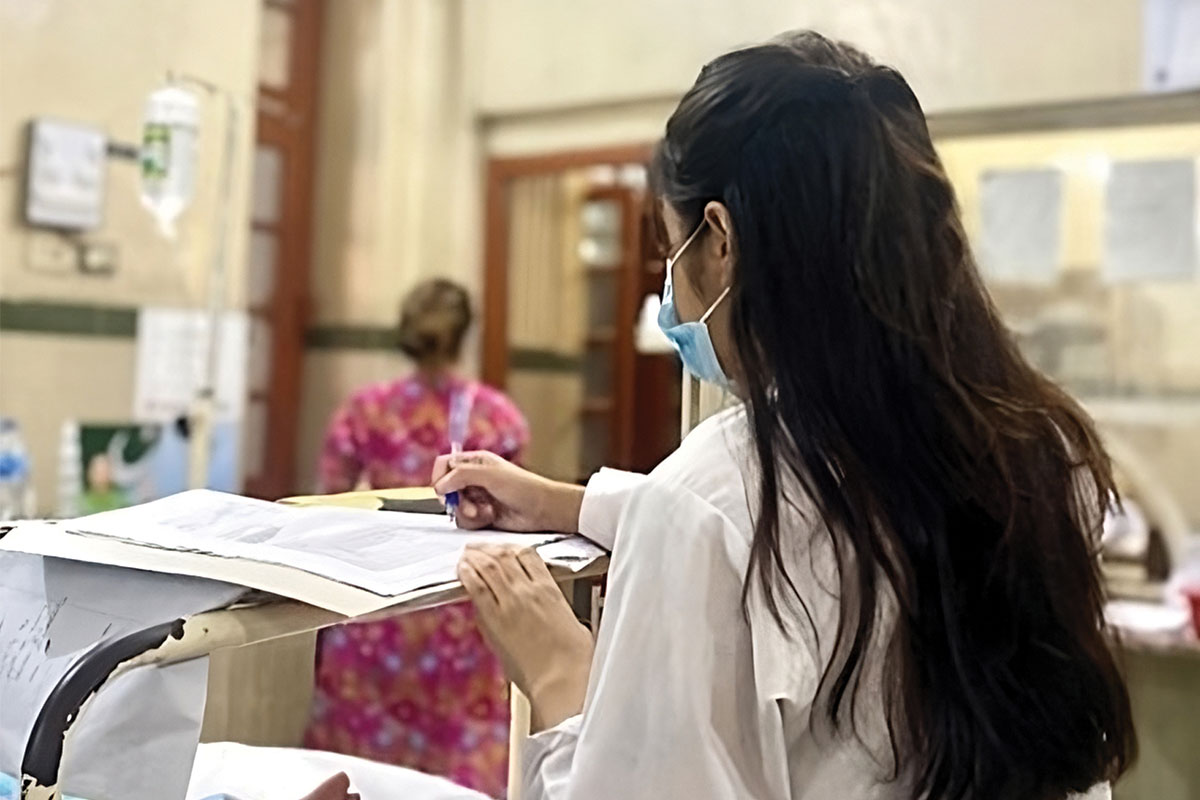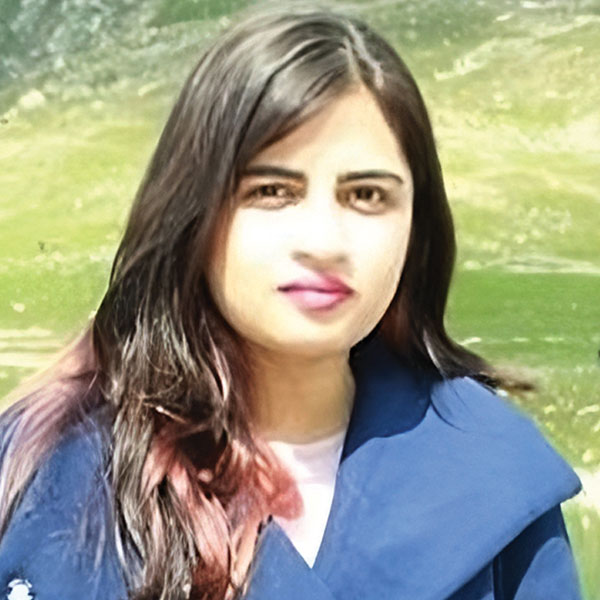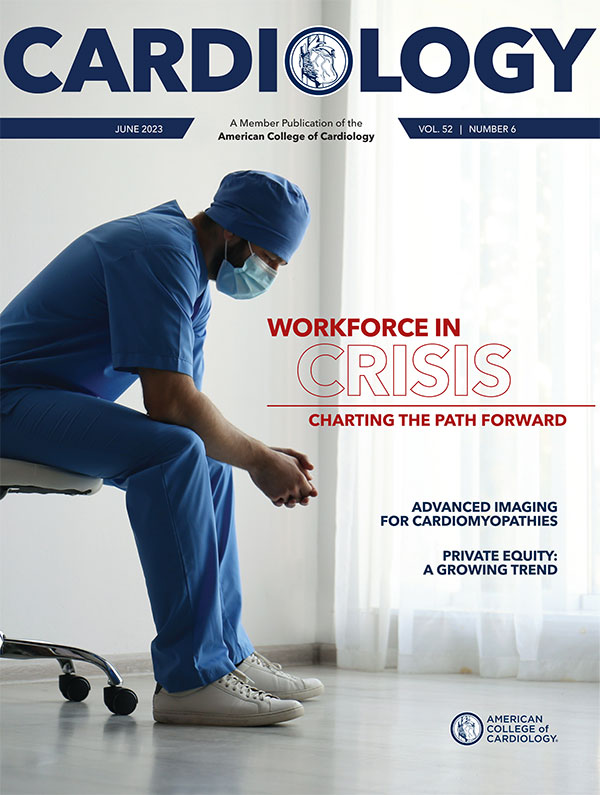From the Member Sections | The Transformative Power of Technology in Medical Education

Medical technology can no longer be dismissed as an "idea for the future." It is an integral component of current health care. With advancements such as artificial intelligence, enhanced ECG, 3D-printed prosthetics and tumor-targeting nanoparticles, both diagnosis and treatment of disease are rapidly evolving. To ensure that future physicians can deliver the best available patient care – especially in low- and middle-income countries (LMICs) like Pakistan with a growing disease burden – it is essential to integrate health care technology education into the medical school curriculum. Unfortunately, Pakistan's medical education system is failing to increase awareness of technology in tomorrow's physicians.
Coming from a family of doctors and as a third-year medical student, I've often pondered tech-hesitancy in Pakistan's medical education and health care systems. My exposure to health care technology in medical school is limited to brief introductions during lectures, which rarely, if ever, include discussion of recent advancements. In contrast, during high school, when I had the opportunity to study genetics in a pre-college program at Smith College in the U.S., I obtained hands-on experience performing polymerase chain reaction (PCR) testing on various samples. I found performing the test myself to be one of the program highlights because it piqued my curiosity and helped me better appreciate how PCR works. I believe such practical experiences are far superior to traditional classroom learning.
Not integrating health care technology into the curriculum of medical schools across Pakistan is common, according to a survey I circulated among students and recent graduates of 13 medical schools. Their responses revealed that most medical schools do not even have access to learning technology such as simulation mannequins and virtual reality, despite their potential to radically improve students' visualization and understanding of complex anatomical structures. Consequently, the strong tech-hesitancy in the medical education system is not only preventing students from learning about potential technological solutions to health care problems, but also compromising the development of a better understanding of medical concepts.
Like many other LMICs, Pakistan is struggling with a high burden of communicable, noncommunicable and mental health diseases. The resource-constrained health care system is struggling to keep up with the needs of the exponentially increasing population.
New! CV POCUS Workbook
Click here to download ACC's POCUS Workbook that provides pragmatic guidance and best practices for clinical practice.
Understanding the Global Burden of CVDs
Click here to explore the JACC Global Burden of CVDs and Risks Interactive Tool.
Delayed diagnoses, substandard infectious disease surveillance and inadequate access to treatment are some of the problems to be addressed urgently. Clinicians have a pivotal role to play in devising these solutions.
I have witnessed some truly inspiring examples of doctors using technology to address these contemporary health care problems. During my first year of medical school, Yasmin Rashid, MD, alumnus of my medical school and Provincial Minister of Health for Punjab, shared in a talk that when she learned about the prevalence of undiagnosed beta thalassemia major in Pakistan, she took it upon herself to bring screening tools for prenatal testing of thalassemia to Pakistan and, with the help of her colleagues, established a prenatal screening program. Her efforts serve as a great example of how a single person with initiative as well as knowledge and access to technology can touch the lives of thousands.
Similarly, a nonprofit organization, Darul Qalb, recently trained students from my medical school to use available technology to screen for subclinical rheumatic heart disease (RHD) in underprivileged children. RHD is a vastly underdiagnosed and underreported endemic disease in Pakistan. Darul Qalb is working towards obtaining accurate statistics about the disease's prevalence and establishing screening programs for its early diagnosis in children. I was deeply moved by the selfless efforts of Darul Qalb's members to create an impact.
Given the potential of technology to revolutionize health care in Pakistan, it is imperative that medical schools incorporate knowledge about modern technology into its curriculum. In addition, medical schools need to provide hands-on training. Courses such as Point-of-Care Ultrasound (POCUS) can significantly enhance students' awareness of technology. It's crucial to increase their interest in technology solutions, including through innovation competitions that allow medical students to work with biomedical engineers to devise solutions to contemporary problems.
Along with changes at the institutional level, medical students should be aware that as future physicians, their skillset and initiatives will impact the lives of millions. Students need to seize every available opportunity to further their understanding of health care technology. Only then can they hope to create a meaningful positive change in the health care scenario of Pakistan today and tomorrow.

This article was authored by Rija Khalid, a third-year medical student at Fatima Jinnah Medical University in Lahore, Pakistan, and a member of ACC's Medical Students Section. Learn more about the Medical Students Section (and other ACC Member Sections) at ACC.org/Membership.
Clinical Topics: Cardiovascular Care Team
Keywords: ACC Publications, Cardiology Magazine, Artificial Intelligence, Developing Countries, Exploratory Behavior, Students, Curriculum, Virtual Reality, Cardiology, Cardiologists, Health Services Accessibility, Communicable Diseases, Cost of Illness
< Back to Listings

